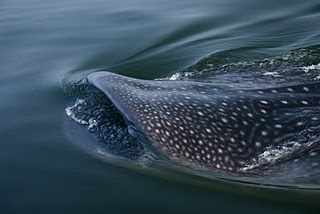With a tip of the Pirates Hat to Veggie Tales and Family Guy for the inspiration
There's a hole in the bottom of the sea,
There's a hole in the bottom of the sea,
There's a hole, there's a hole,
There's a hole in the bottom of the sea.
There's a pipe in the hole
In the bottom of the sea,
There's a pipe in the hole
In the bottom of the sea,
There's a pipe, there's a pipe,
There's a pipe in the hole
In the bottom of the sea.
There's some oil in the pipe in the hole
In the bottom of the sea,
There's some oil in the pipe in the hole
In the bottom of the sea,
There's some oil, there's some oil,
There's some oil in the pipe in the hole
In the bottom of the sea.
There's a hole in the pipe with the oil in the hole
In the bottom of the sea,
There's a hole in the pipe with the oil in the hole
In the bottom of the sea,
There's a hole, another hole,
There's a hole in the pipe with the oil in the hole
In the bottom of the sea.
There's a cone over the hole in the pipe with the oil in the hole
In the bottom of the sea,
There's a cone over the hole in the pipe with the oil in the hole
In the bottom of the sea,
There's a cone, an inverted cone,
There's a cone over the hole in the pipe with the oil in the hole
In the bottom of the sea,
There's a leak in the cone over the hole in the pipe with the oil in the hole
In the bottom of the sea,
There's a leak in the cone over the hole in the pipe with the oil in the hole
In the bottom of the sea,
There's a leak, ANOTHER leak,
There's a leak in the cone over the hole in the pipe with the oil in the hole
In the bottom of the sea,
So NOW,
There's a plume from the leak in the cone over the hole in the pipe with the oil in the hole
In the bottom of the sea,
There's a plume from the leak in the cone over the hole in the pipe with the oil in the hole
In the bottom of the sea,
There’s a plume, a killer plume
There's a plume from the leak in the cone over the hole in the pipe with the oil in the hole
In the bottom of the sea.
There's a boom on the plume from the leak in the cone over the hole in the pipe with the oil in the hole
In the bottom of the sea,
There's a boom on the plume from the leak in the cone over the hole in the pipe with the oil in the hole
In the bottom of the sea,
There’s a boom, a floating boom
There's a boom on the plume from the leak in the cone over the hole in the pipe with the oil in the hole
In the bottom of the sea.
There's a gap in the boom on the plume from the leak in the cone over the hole in the pipe with the oil in the hole
In the bottom of the sea,
There's a gap in the boom on the plume from the leak in the cone over the hole in the pipe with the oil in the hole
In the bottom of the sea,
There’s a gap, just check a map!
There's a gap in the boom on the plume from the leak in the cone over the hole in the pipe with the oil in the hole
In the bottom of the sea.
There's a bird in the gap in the boom on the plume from the leak in the cone over the hole in the pipe with the oil in the hole
In the bottom of the sea,
There's a bird in the gap in the boom on the plume from the leak in the cone over the hole in the pipe with the oil in the hole
In the bottom of the sea,
There’s a bird, a struggling bird
There's a bird in the gap in the boom on the plume from the leak in the cone over the hole in the pipe with the oil in the hole
In the bottom of the sea.
There’s a company responsible for the bird in the gap in the boom on the plume from the leak in the cone over the hole in the pipe with the oil in the hole
In the bottom of the sea,
There’s a company responsible for the bird in the gap in the boom on the plume from the leak in the cone over the hole in the pipe with the oil in the hole
In the bottom of the sea,
There’s a company, a Big Oil company
There’s a company responsible for the bird in the gap in the boom on the plume from the leak in the cone over the hole in the pipe with the oil in the hole
In the bottom of the sea.
...and we should never let up on them until they clean up the mess...
 Thursday, July 15, 2010 at 5:12PM
Thursday, July 15, 2010 at 5:12PM  CNN is reporting that the new device put on the wellhead of the BP oil rig Deepwater Horizon appears to have stopped the leak and is holding under the pressure, at least for now. Lets all cross fingers that this marks the end of major leaking into the Gulf of Mexico.
CNN is reporting that the new device put on the wellhead of the BP oil rig Deepwater Horizon appears to have stopped the leak and is holding under the pressure, at least for now. Lets all cross fingers that this marks the end of major leaking into the Gulf of Mexico.





